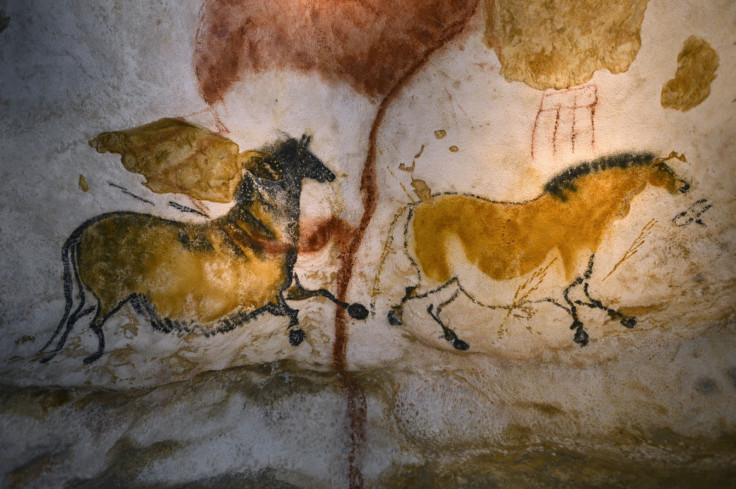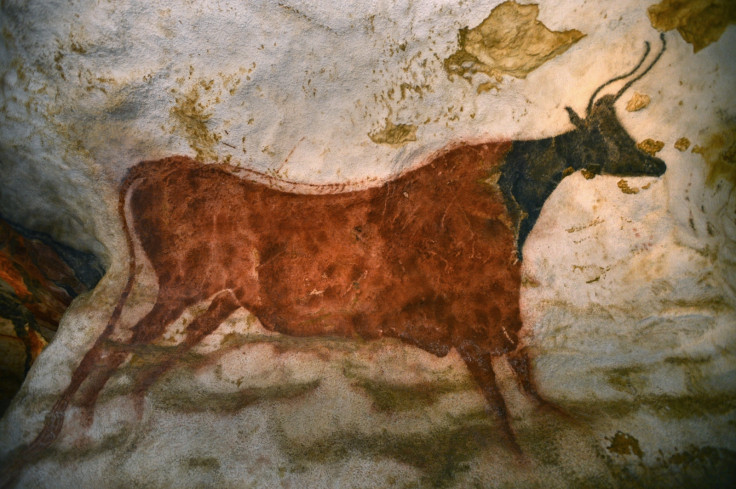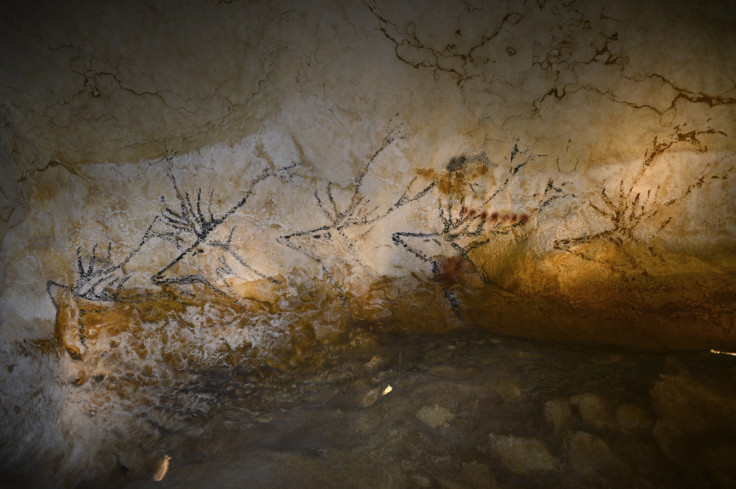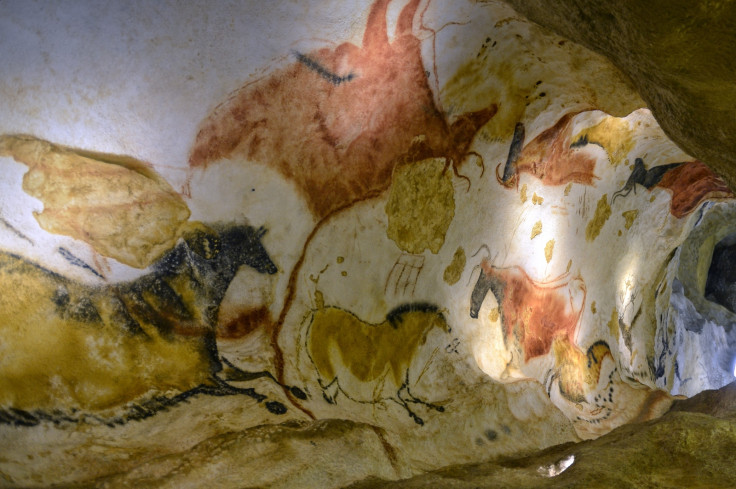Lascaux cave paintings still hide secrets more than 70 years after their discovery
On 15 December, a new site called Lascaux 4 will open its door to educate the public about the 20,000 years old paintings.
Lascaux cave paintings are perhaps the greatest masterpiece of parietal art ever found. They have fascinated generations of people and puzzled prehistorians since their discovery in September 1940, by a group of four local boys and their dog.
Beautiful, colourful depictions of animals as well as mysterious symbols and engravings, adorn the walls of the caves, situated in Dordogne in southern France.
While the original caves are now closed to the public (see box), a site known as Lascaux 4 will open its doors nearby, on 15 December 2016. It will be the most complete and accurate reproduction of the caves to date, allowing the public to discover them in their entirety, and to see very precise copies of the paintings.

A room at the end of the visit – a "theatre of parietal art" – will enable visitors to replace the paintings in their historical context and to pierce their secrets. There are some questions however that archaeologists and prehistorians themselves do not have answers to. The ancient and now extinct societies that painted the artworks at Lascaux have yet to reveal all of their mysteries.
The challenge of dating Lascaux's art
This is probably one of the most important and debated question when it comes to studying Lascaux – when were the paintings and engravings created and were they all done at the same time? Experts estimate that the paintings are around 20,000 years old (between 17,000 and 22,000 years old depending on the dating technique used). However, since none of them were made using coal, it is not possible to date them directly with the radiocarbon dating method.

This means that archaeologists have to rely on objects found in the cave to come up with dates, even though there aren't that many. Unlike shelters from that time, which were continuously inhabited by groups of prehistorical men and bear significant traces of ancient human waste, this does not seem to be the case in Lascaux.
This suggests that no one lived there for extended periods of time. It seems people came back in the cave at various points throughout its history to paint, but trying to date these processes more accurately is impossible.
Prehistorian Jean-Pierre Chadelle who worked on the Lascaux 4 project and validated its scientific accuracy, told IBTimes UK: "We do not know how much time elapsed between the completion of each drawing. We are guessing not that much, less than a millennia, because there are no notable differences in style between the different paintings".

"However, in the absence of coal in the paintings, we cannot hope to be more precise. Conducting more detailed archaeological excavations in the cave might help, if we were to find more objects and to date stratigraphic layers, but this is not possible right now due to Lascaux's very fragile state".
Who were the artists?
Very little is known about the human groups that created Lascaux's paintings. There has been contradicting hypotheses about whether one or more groups participated over time, and if women and children were included in the creative process alongside men.
One thing is certain: doing the paintings and engravings represented a huge amount of work and would have thus been carried out by many individuals working in harmony. They would have had to get the natural pigments used to paint, sometimes far from the cave, and to carry them all the way back.

"You have to remember that these were societies that had not yet domesticated animals for transport. So they had to carry a lot of material themselves and had to plan well in advance for these paintings, bringing in light inside and rudimentary scaffolding. All this represented an significant effort. This suggests that completing the paintings was very important for them, this work had a unique meaning and status that justified all the energy they put into it," Chadelle says.
These communities would also have shared a language with a certain degree of complexity, in order to prepare paintings as sophisticated and subtle as the ones found in Lascaux.
The meaning of art
There is no doubt then that the cave paintings assumed a particular importance for the societies that made them, and potentially had a symbolic and spiritual purpose. However, it is not possible to say what the exact meaning of the painted animals and symbols was, because our own norms and social conventions are very different from theirs. Many engravings cannot be seen with the naked eyes and overlap with other artworks, which makes the analysis even more difficult.

"We do not have a 'Rosetta Stone' to decipher the many signs and drawings that appear on the walls of the cave. Piercing the secrets of our ancestor's intentions is not possible because they didn't reason in the same way that we do now. We are not sure what their religion was, if indeed they had one," Chadelle cautions.
After walking through the caves, the visitor thus comes out with more questions than he had before entering. Even without wondering about what the symbols' meaning is, one may wonder why they are represented so schematically while the animals are carefully crafted. Does this reflect a special importance given to animals? A strange creature that looks a bit like a unicorn has also puzzled prehistorians for years. They are not able to determine what species it belongs to and how important it is to understand our ancestors' intentions.
Furthermore, some paintings are found in remote areas of the cave, which are very difficult to access, and it is not clear why the artists would have chosen to venture so deep into Lascaux.

One of the most puzzling element is that only one human representation appears in the cave – a hybrid form mixing bird and man features, traced in a very schematic, simplistic way. Who is he? Was there some kind of interdiction to represent more detailed human figures?
These are interrogations that won't be solved soon, but enrich our way of thinking about early human societies and about parietal art.
Opening Lascaux 4
Lascaux cave paintings estimated to be around 20,000 years old. The fact they were particularly well preserved when they were found meant the site was quickly opened to the public. However, it had to be closed down in 1963 because the huge number of visitors resulted in the paintings deteriorating at a rapid pace. On some days, there were so many people inside the caves that some ended up fainting.
Lascaux 2, an impressive reproduction of part of the caves, was opened in 1983, to allow people to get a sense of the paintings, without irrevocably ruining the originals. In 1979, the caves were added to UNESCO World Heritage List.
This was followed in 2012 by the creation of Lascaux 3, an itinerant exhibition about the cave art, which has so far been presented in a number of major cities around the globe. It is currently in Tokyo. But these efforts to make Lascaux famous around the world have culminated with the opening on 15 December of a reproduction of the full caves, inside a large centre of prehistoric art with rooms to spread information about Lascaux and to show educational films about its mysteries.
© Copyright IBTimes 2025. All rights reserved.






















